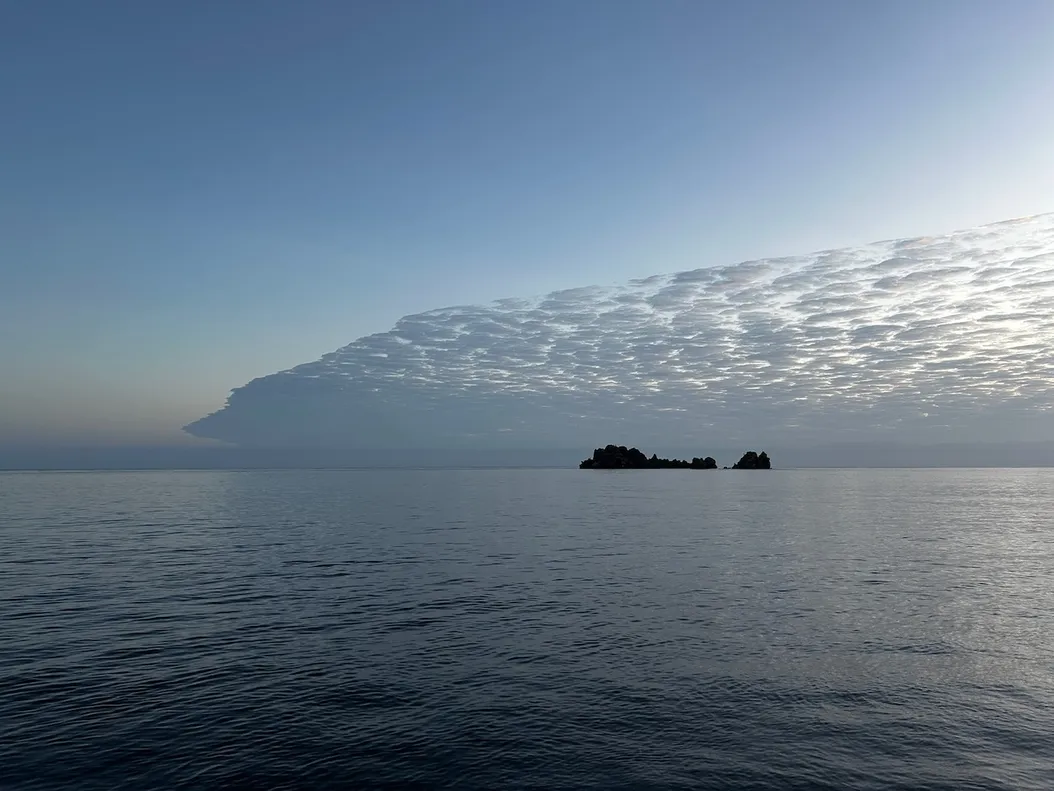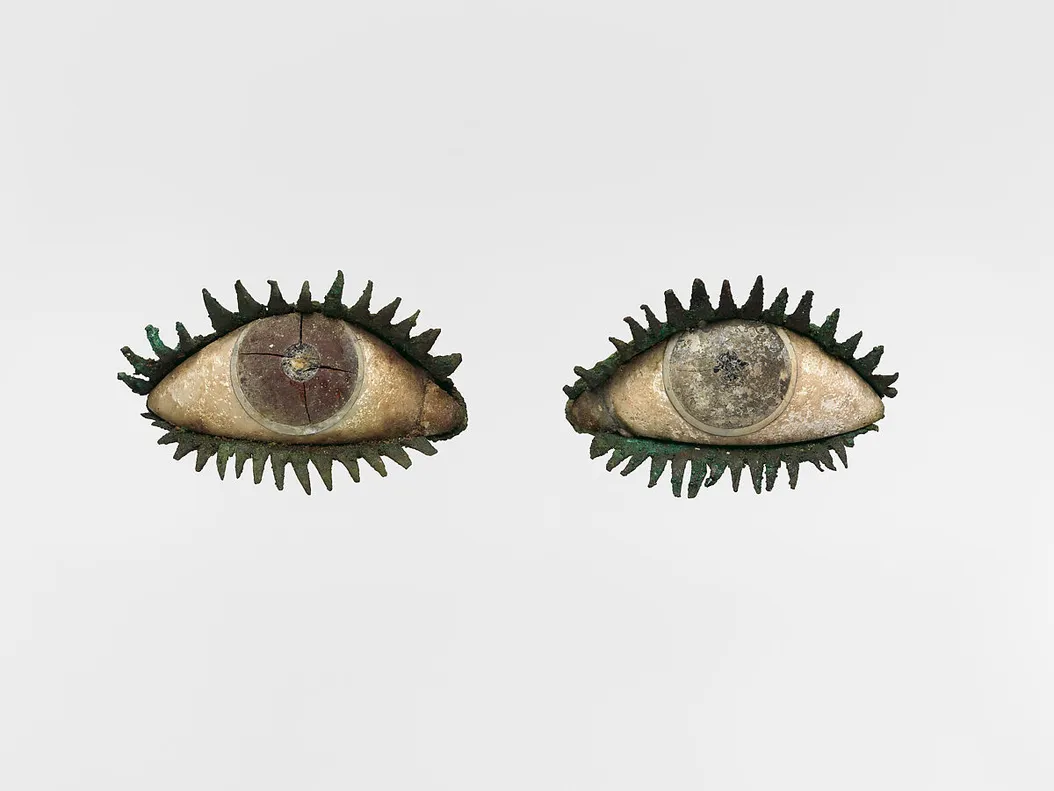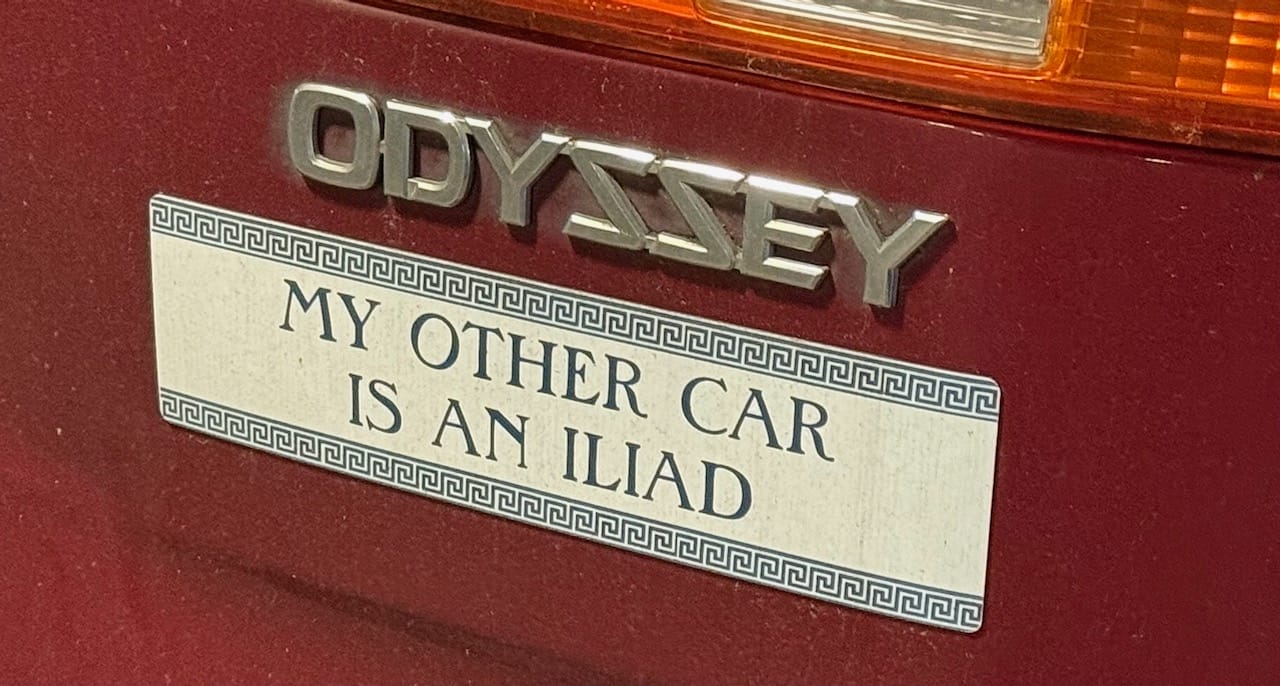
〰️〰️ IN 〰️
These are things I read, saw, ingested, ate, listened to, or just generally thought about in the last month that I want to share with you. It's an incomplete list (obviously) but it's the stuff I'm still thinking about.
I was on the road for a lot of April, which was fun and exciting and also exhausting. This newsletter also features bugs, giant plants, wooden sculpture, giving up, and some awards.
before I left, I:
- Saw Etran de L'air in concert, which was quite fun. Maya Ongaku opened for them and I found them really fun and they're now in my chill studio time playlist.
- Joined the Flash Forward book club in a discussion about Glass Houses with author Madeline Ashby! If you're a paying member, you have access to the book club on Discord where we coordinate these meetings and pick books. We recently picked our next reads which are:
- Let This Radicalize You: Organizing and the Revolution of Reciprocal Care by Kelly Hayes and Mariame Kaba
- All the Water in the World by Eiren Caffall
- Started Mort by Terry Pratchett, my first Pratchett book. I had always been too overwhelmed by where to start on the many, many Discworld books. I read all kinds of guides on the best place(s) to begin, and still felt confused and conflicted, so instead of making a choice I put a hold on a couple of the usual top suggestions and waited to see which one came in first. It was Mort. I'm enjoying it so far!

olympic peninsula
For much of this month I was on the road, first to Seattle, then the Olympic Peninsula, then back to Seattle. Here are some things I saw and am still thinking about.
at the Meerkerk Gardens
Have you ever been somewhere so in bloom that there are so many bees that the air sounds like a crashing ocean nearby? It was nearly impossible to capture — but it was incredible. Yes, the flowers were beautiful. But the sound is what I'm always going to remember.
at the Port Angeles Fine Art Center
On our way out of town we stopped by this little sculpture park and museum, where they had just opened a new show by Jennifer Angus, titled Hidden World. Here's the show description:
Hidden World: Jennifer Angus is an immersive exhibition by Madison-based artist Jennifer Angus that transforms the Port Angeles Fine Arts Center into a living tapestry of nature, using preserved insect specimens to create intricate patterns that dance across the walls. Through her art, she reveals both the delicate beauty and the fragility of our ecosystem, offering a thoughtful reflection on our relations with the natural world.
Each carefully composed piece invites the viewer to explore the hidden complexity of the insect world, where forms of nature intersect with the art of pattern-making. As the room is filled with these meticulously crafted designs, we are reminded of the essential roles that even the smallest of creatures play in sustaining life on Earth.
On paper, I should have loved this. But all I could think about, looking at the thousands of insects pinned to the wall, was think about where they came from. Obviously Angus didn't catch and preserve all these insects herself. She must have ordered them somewhere, in bulk.
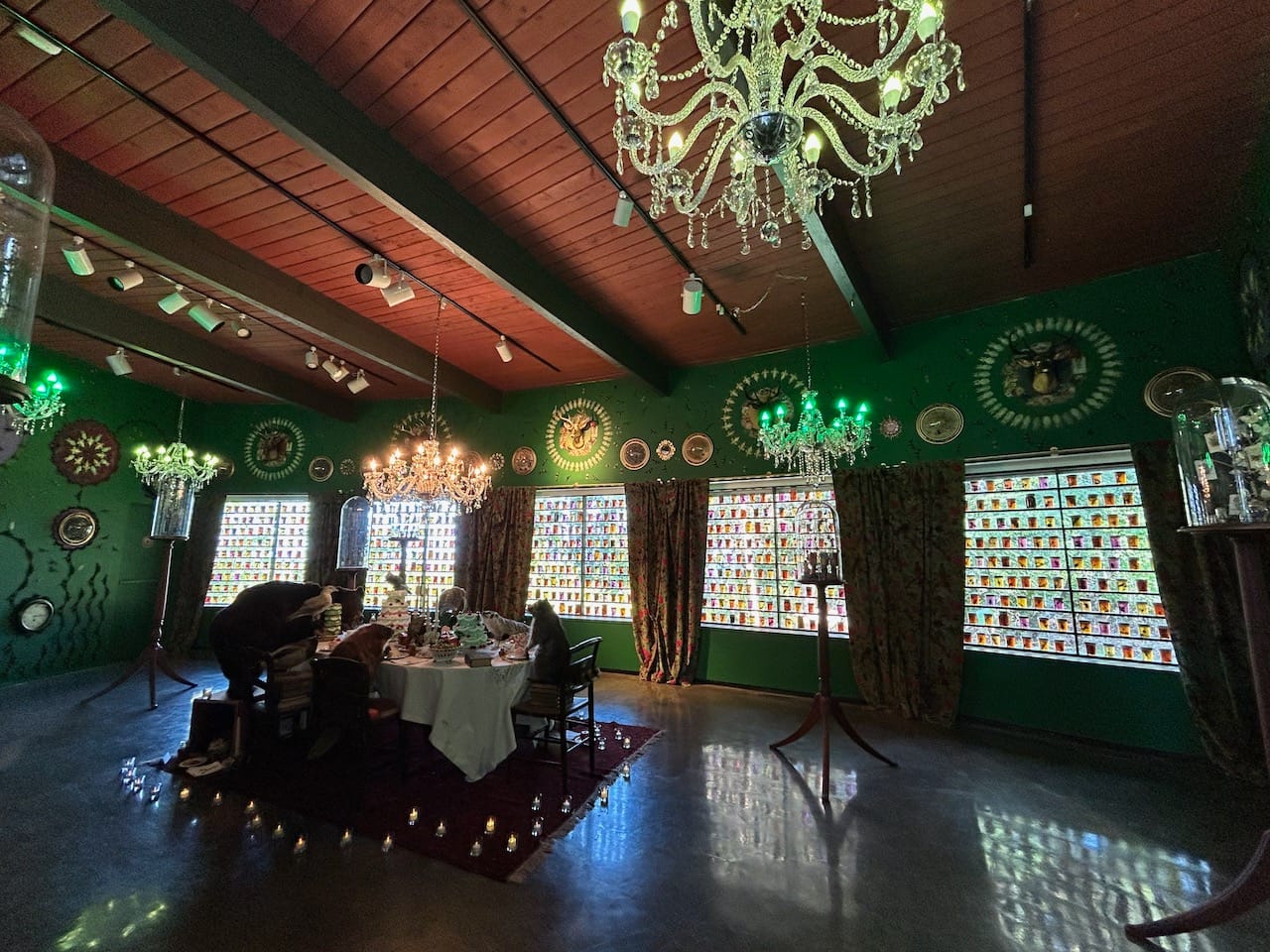
Angus's website addresses her use of the bugs. "Not only are the insects I use not endangered, they are repeatedly used from exhibition to exhibition, some are more than 20 years old. Collecting insects in the wild is ecologically sound if done in a thoughtful manner however that unfortunately is not always the practice. These days a number of insects are now being farm raised with the express purpose of marketing to collectors and people like myself. When I am able to use farmed insects, I most certainly do."
This led me down a little bit of a research rabbit hole about the farming of insects for things like art and shadow boxes to be sold in curiosity shops. Looking at online stores for these kinds of things, you often see the same line repeated. Something like "All of our butterflies, insects & other specimens are ethically sourced from conservation farms around the world." Or "We work with butterfly farms and breeders to source species."
At BugsDirect you can buy wholesale — and find many of the insect species that Angus used in this exhibit. Twenty orange cicadas costs $102. Ten giant leaf insects costs about the same amount. You can get lots of giant water bugs, blue carpenter bees, wolf spiders and even flying geckos. They're beautiful insects, but I do wonder why we need to breed them so that we can put them up on the wall. Why does it seem like some folks find this totally cool and unique, but if you said that you were breeding deer or rabbits or falcons to kill and make mounts they'd be disgusted?
Maybe this is what Angus's piece was about — the absurd excesses that can exist even under the guise of "nature." The work is clearly referencing the Rococco world of gilded mirrors and diamond crystal chandeliers — often now symbolic of ridiculous and unethical extravagance, often built on the blood of others. Maybe the idea was to make people think about the blood of these insects, and how something can look natural or "green" and still be brutal. I don't know! But I'm still thinking about insect farms, and what their existence says about modern life and culture.
seattle
We also spent some time in Seattle proper, and mostly what I saw were friends and art. So here's some art I liked!
at the Wing Luke museum
Safwat Saleem had an amazing piece called "Anxieties of an Immigrant Father" made up of graphs documenting his fears and anxieties about parenting his kid.
There was also a really neat exhibit about three Japanese painters (Kamekichi Tokita, Kenjiro Nomura, and Takuichi Fujii) who made a big impact in the art world (including winning multiple prestigious awards) before World War II, who were then all essentially erased by the anti-Japanese sentiment and government violence during and after the war.
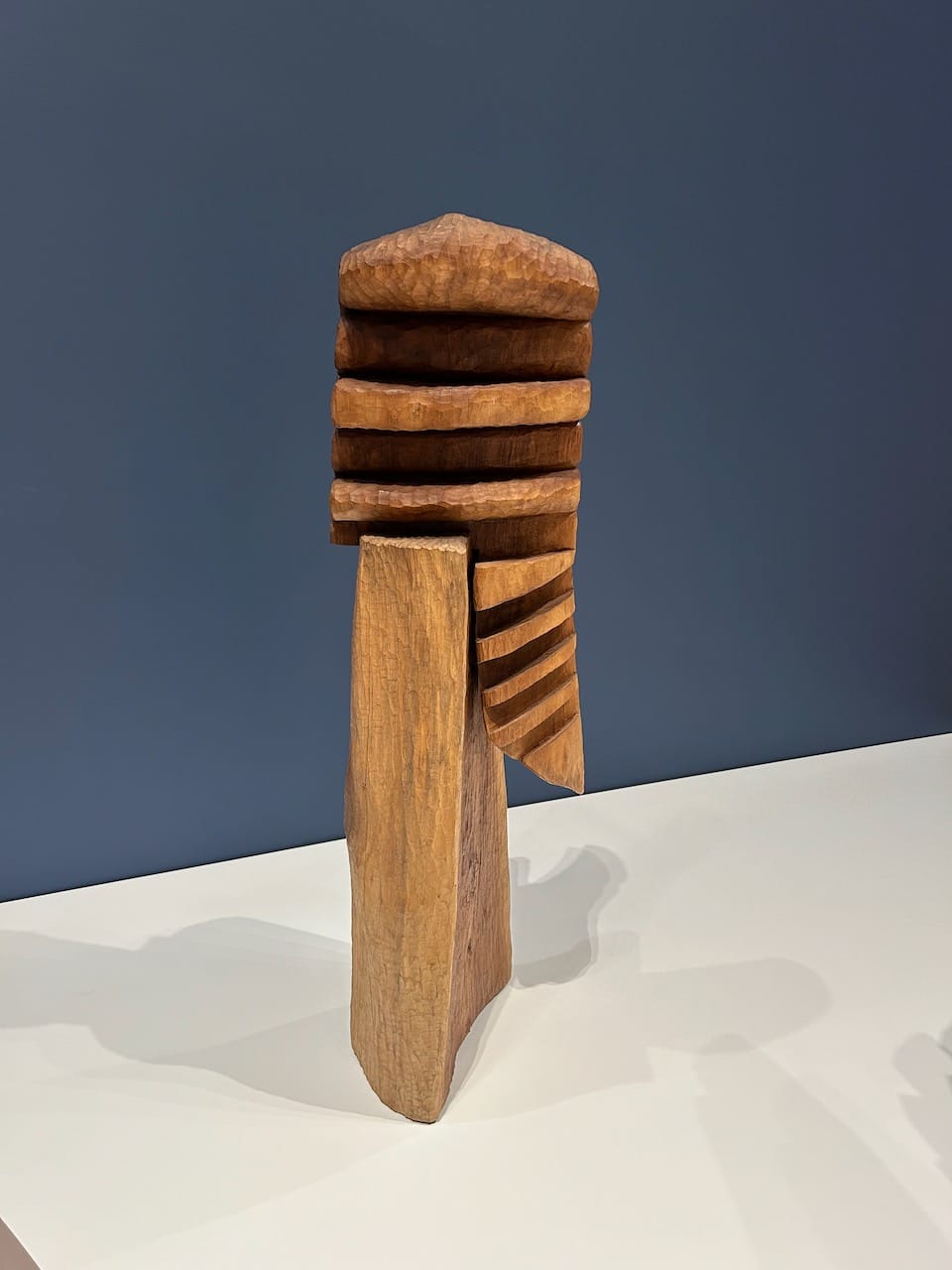
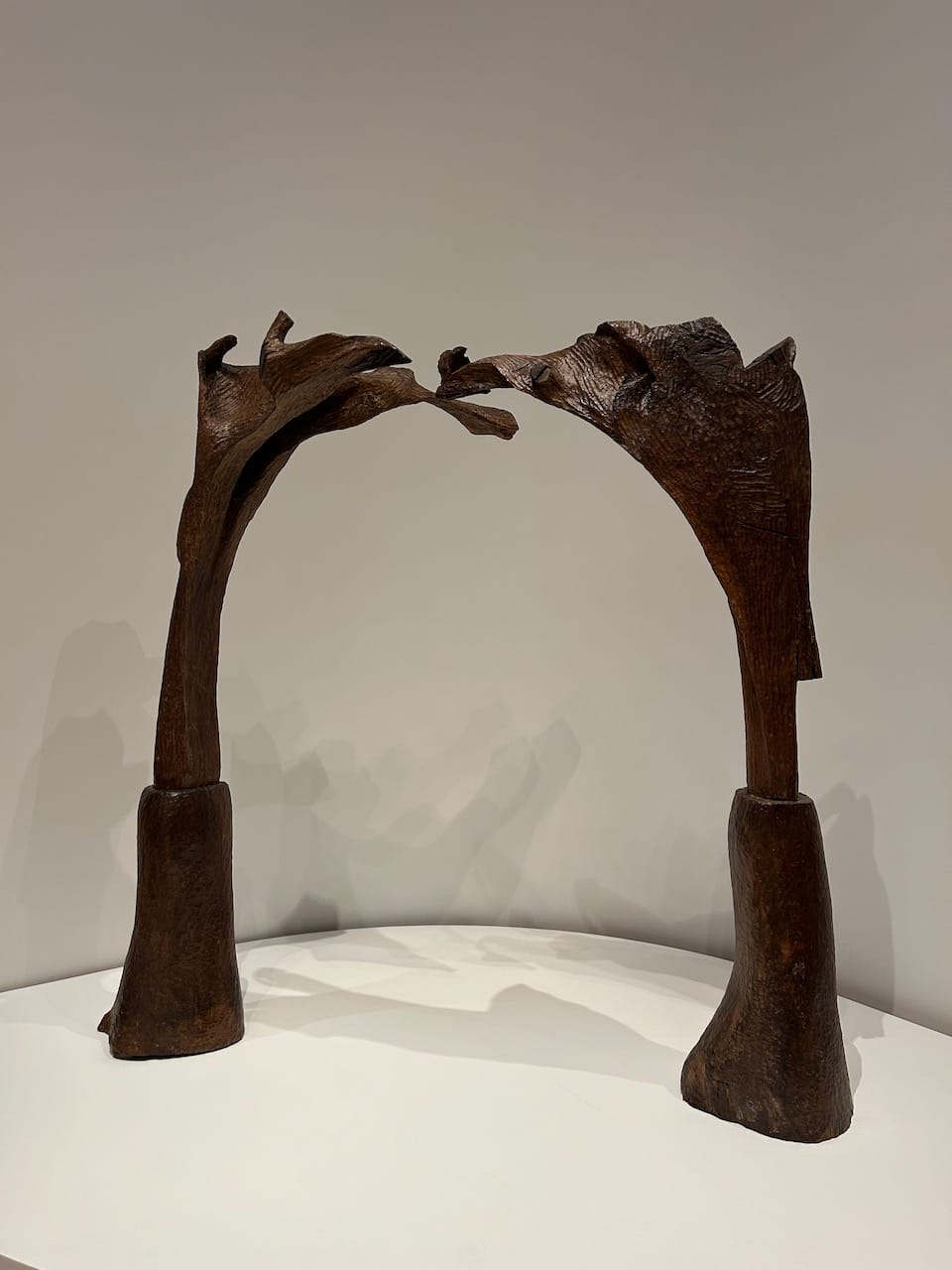
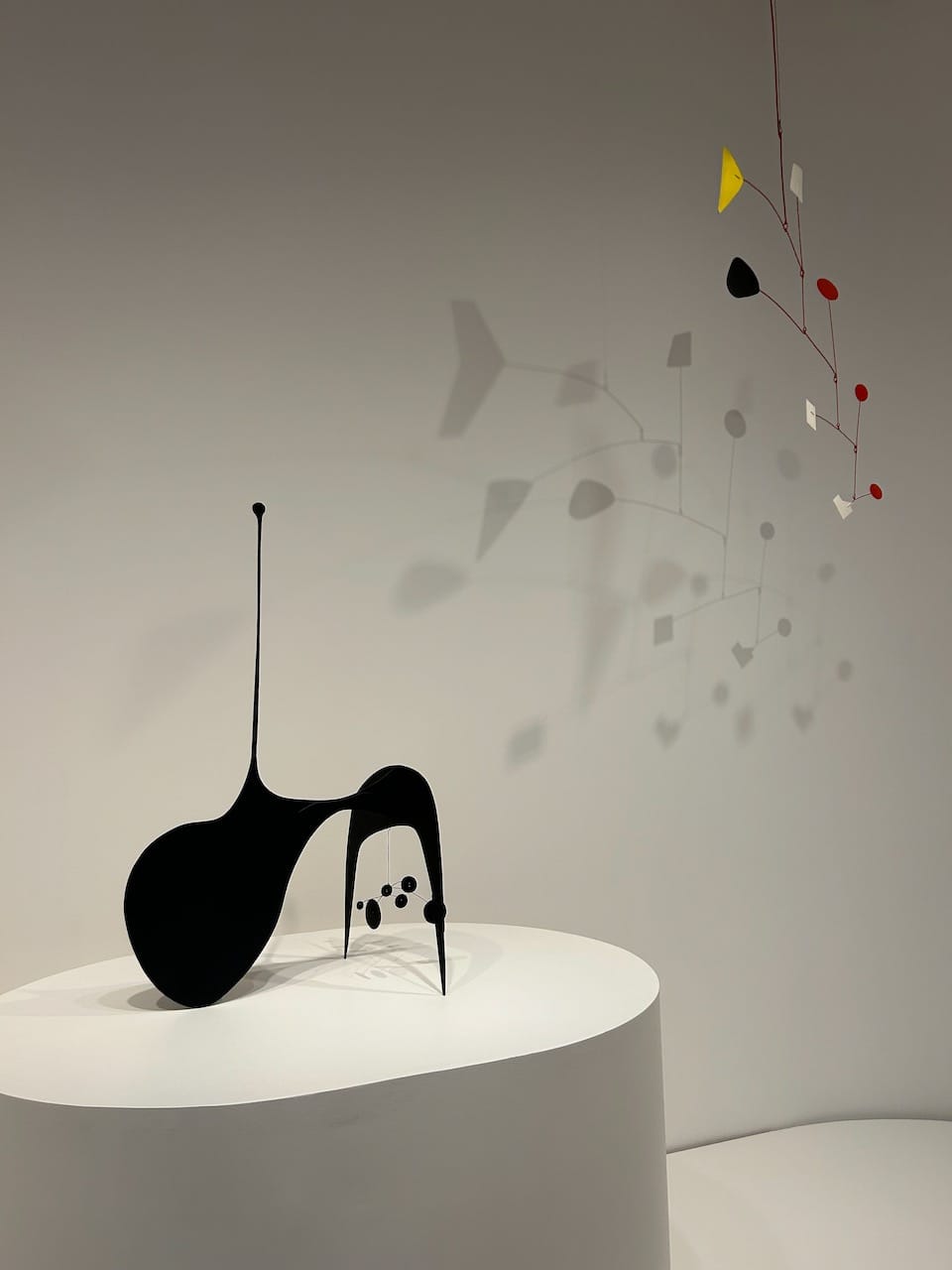
at the Seattle Art Museum
They had an Ai WeiWei exhibit, which was, of course, interesting. I'm a fan of Ai's work generally, but I will admit that walking through the exhibit all I could think about was all the people whose labor went into creating his pieces. Ai works across a huge number of mediums: marble, wood, ceramic, iron, but for many of the pieces he's not the person making the actual physical pieces of art that bear his name. One piece, for example, was a pile of millions of tiny sunflower seeds made of porcelain. Ai didn't make those. Here's a video about the people who did. Nor did Ai carve the marble couch, or create the wooden map of China.
This doesn't mean he's not an artist, or even the artist behind these pieces, nor does it mean I think this work isn't good or worthwhile. Ai is, sometimes, very transparent about this fact. He involves communities in his work in interesting ways. But it was something I was thinking about a lot while looking at the work.
The exhibit I actually found most interesting wasn't the Ai WeiWei one, but instead something next to it — an area of the museum that had the work of two artists: Alexander Calder and Thaddeus Mosely. Calder I had obviously heard of (and I confess I am forever a sucker for his work — I just love it). But Moseley was new to me. Turns out he's a fascinating guy — still making big, impactful wooden sculptures at nearly 100 years old.
This interview with him is really fascinating:
Mosley has gotten a lot more attention in the last few years, but for a long time he just scraped by. He worked with wood because that was what he could get for free. He never made anything more than ten feet tall because his studio was never going to get any bigger. He was told not to stand by his work at shows, because nobody would buy it if they knew it was by a Black artist. Now, he's exhibited in fancy galleries and placed next to Calders. This New York Times interview gets at some of that, and I was really struck by this one line:
How does that feel?
Well, I don’t feel that the work has improved, but the situation has tremendously.
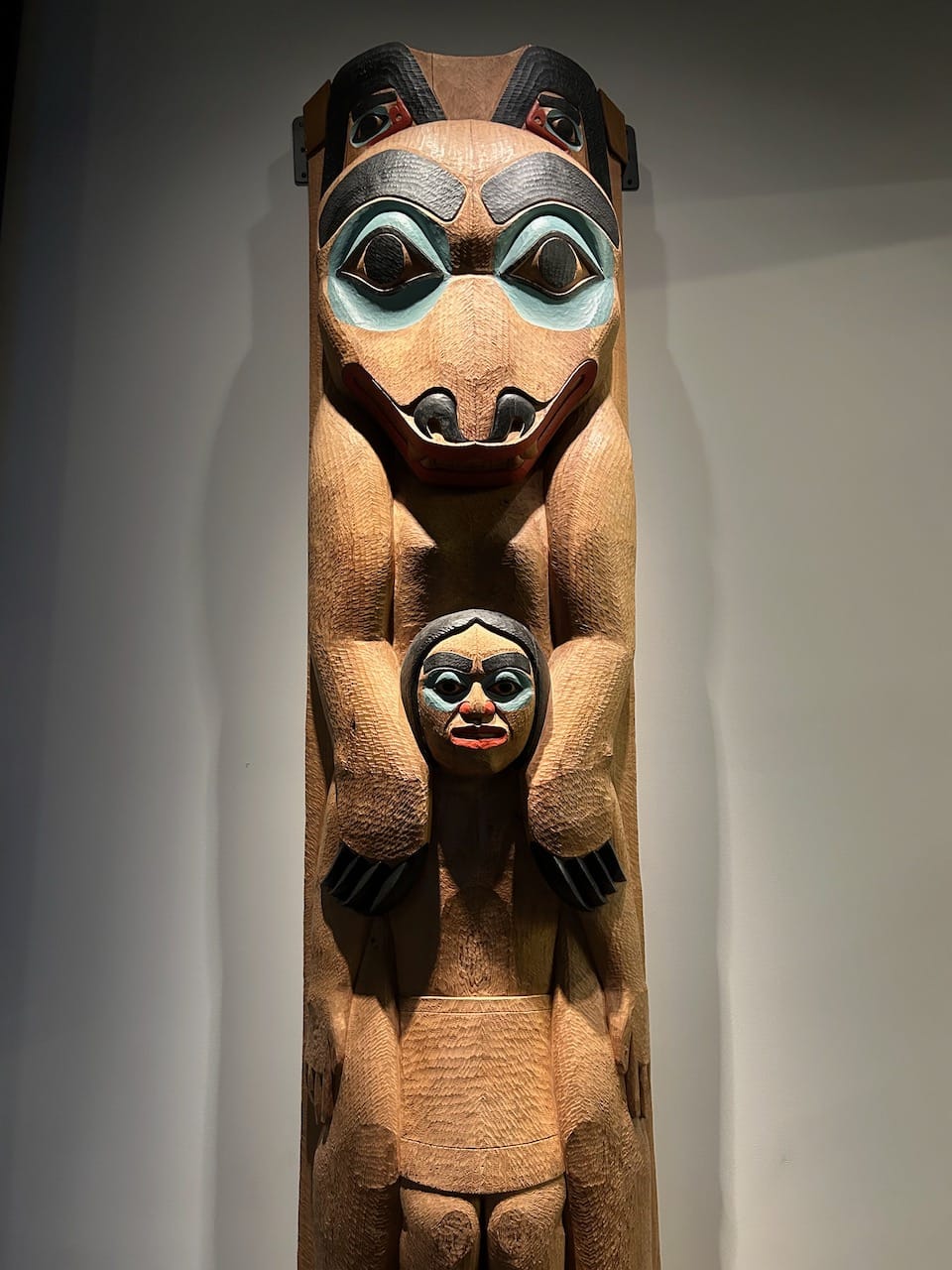
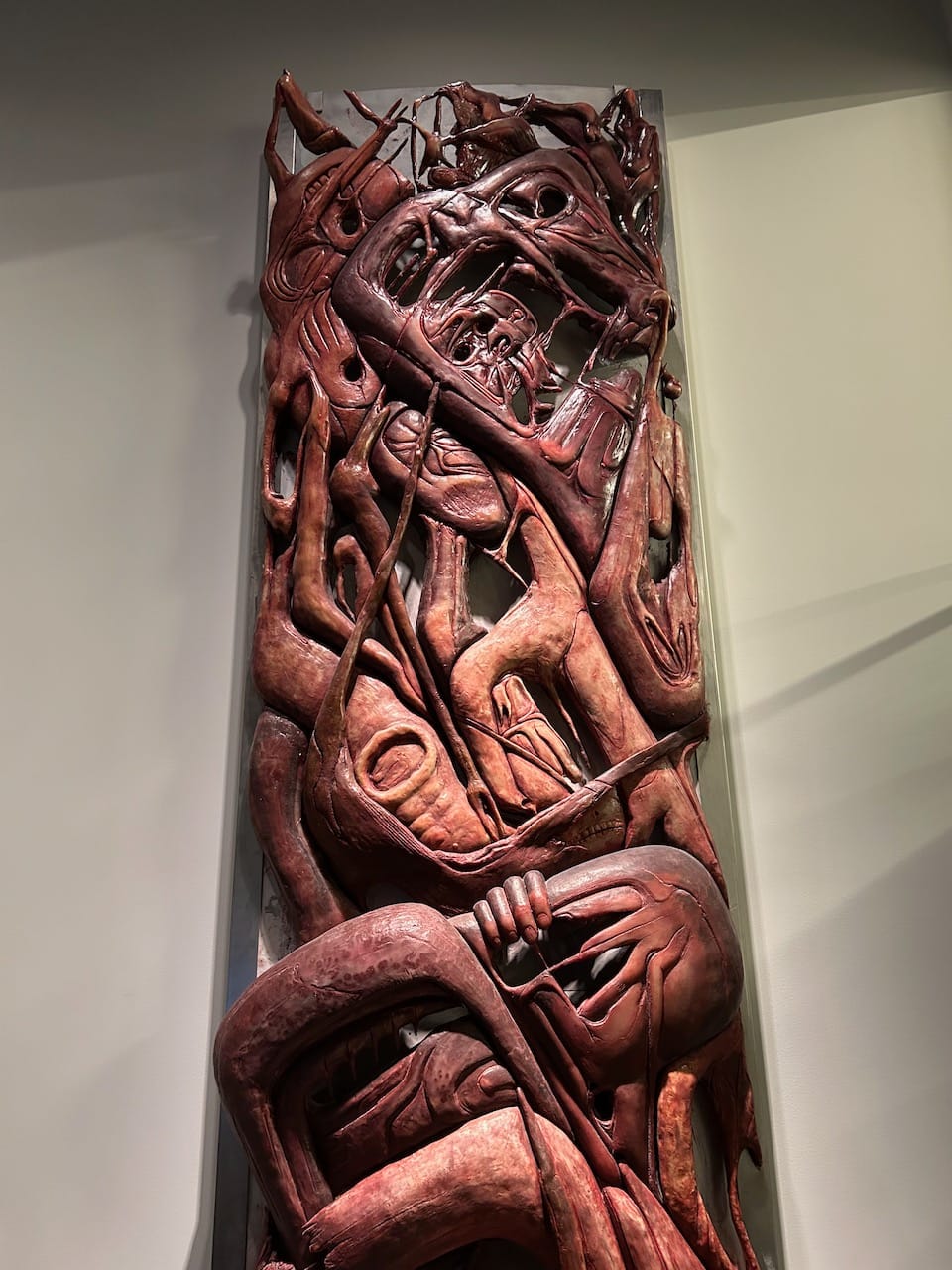
at the Burke Museum
Lots of cool natural history stuff here but the thing I'm still thinking about is a set of house posts (above), both depicting the same story but in incredibly different ways. These are two versions of the following story:
The house posts depict a crest of the Tlingit Teikweidi clan: a grizzly bear who marries and has bear children with the human hunter Kaats ʻ. In some versions of the story, the grizzly bear warns Kaats ʻ never to look at his human wife again. But he is tricked into doing so, and his bear children kill him for betraying their mother. When the grizzly bear wife finds his shredded body, she sings a song of mourning.
On the left is a post by Nathan Jackson, showing Kaats' and his grizzly bear wife happily together. On the right is a post by his son Stephen Jackson, and depicts the moment that the bear children shred Kaats's body.
These two posts were created by the Jacksons for the Burke after the museum returned posts that were stolen from several Tlingit villages by an exhibition in 1899.
a few smaller things I enjoyed:
- "The first principles that we are all here, on this Earth, to enjoy a vast, alarming, gorgeous range of possibilities. We’re here to meet a stunning variety of different people and to see a breathtaking sweep of different places and to soak in and appreciate and tolerate and savor all of it. We can’t become people who live in one narrow way and therefore have no flexibility, no range. We can’t grow into humans who react to the world like it’s just a maze of offensive and insulting forces that are out to destroy us." This comes from an advice column about a woman who is leaving behind her farm dream, but I think (as is so often the case with advice columns) it applies to so much. For me, this made me think about AI, and the ways it flattens the work and weirdness and important wrestling we must do with life, art, and our own dreams.
- "But, ultimately, the war is always at home and the first step to building a better world is defining for ourselves who we want to be in that world." This interview with Sabrina Hersi Issa is full of gems.
- "The challenge for our times is to locate and elevate the artists using their platforms for art and other social goods rather than just securing further personal profit." This piece by W. David Marx (which I read via Kelsey McKinney's newsletter) hit on a lot of things I've been thinking about recently in terms of the work of art and the standards we hold successful artists to.
- "For these guys, there is no history they don’t like, and no future in which they might not have control. There is only now, and their near-orgiastic awareness—mindfulness, if you will—of their own brutal dominion." Rebecca Traister's recent newsletter has me thinking about my current non-fiction book proposal and the ways in which "futurism" is simply a form of control.
- "If the long arc of history ever bent towards justice it’s only because ordinary people like you and I have gotten our hands dirty and pulled." I'm not in Toronto but I'm very into this project by Jenny Zhang that tries to compile in-person political actions in the city in a place that isn't Instagram or some other big tech controlled platform.
〰️ OUT 〰️〰️
This is stuff I wrote, created, or published.
weaving woes
Two newsletters ago I wrote to you about learning to weave, and hoping to make some woven sculptures. I made some clay pieces for this, and sketched out how I wanted the weaving to go. I tested various materials — different types of wire for the spokes, different types of cord for the actual weaving. And I got some small tests that I liked.
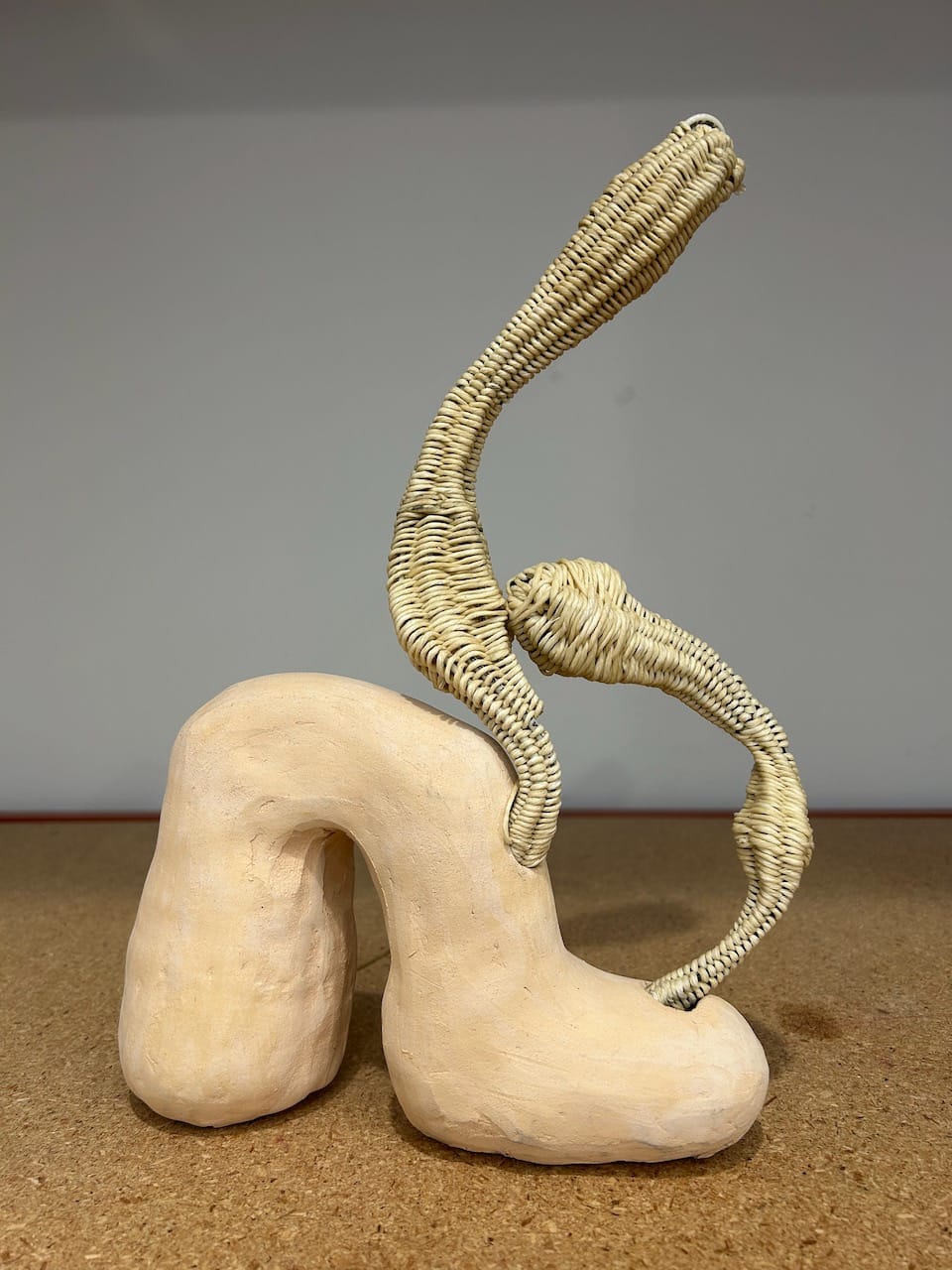
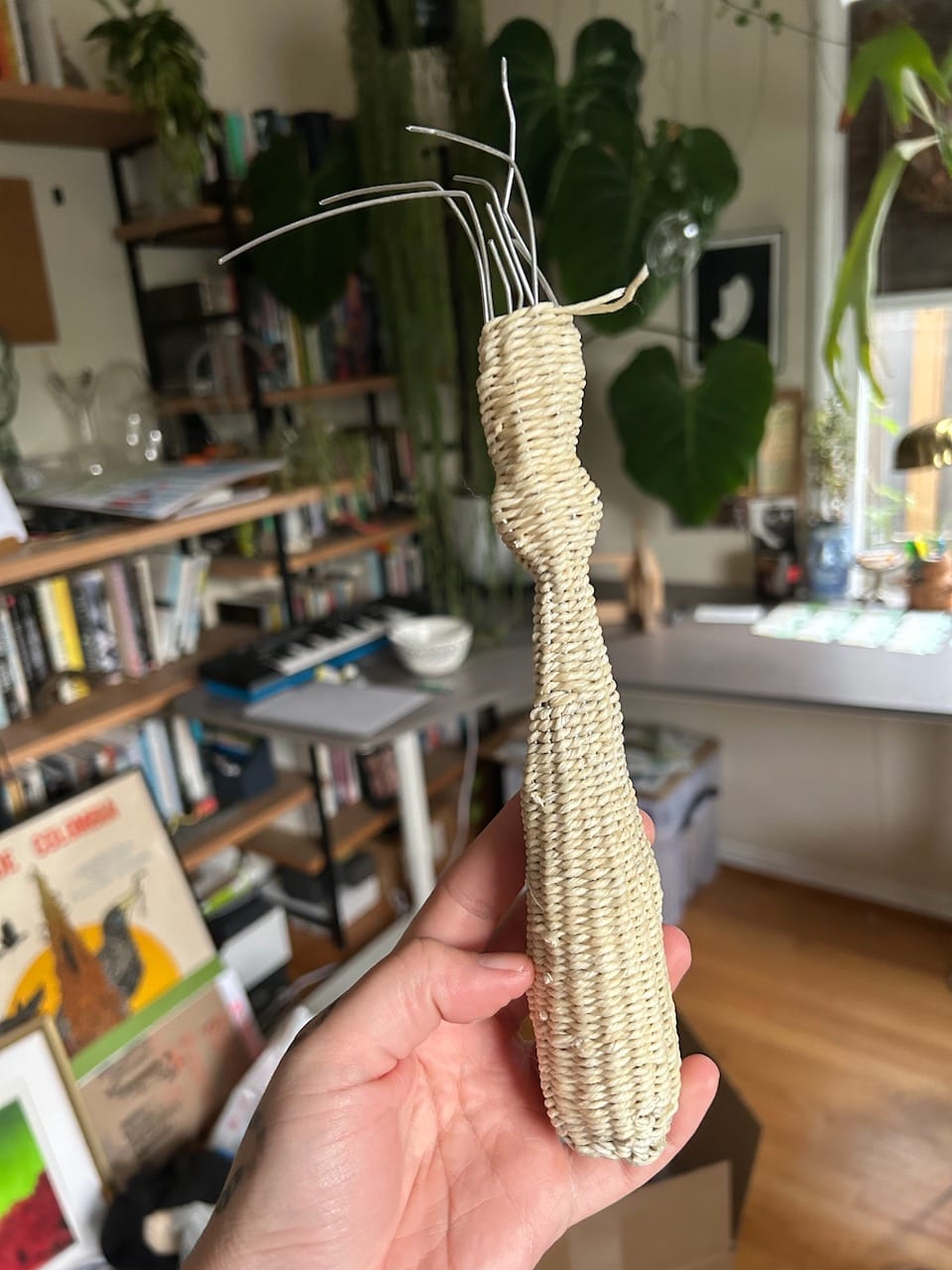
So I started working on the bigger versions — one that was meant to be 52" long. You can see here my small prototype, and then the big one:
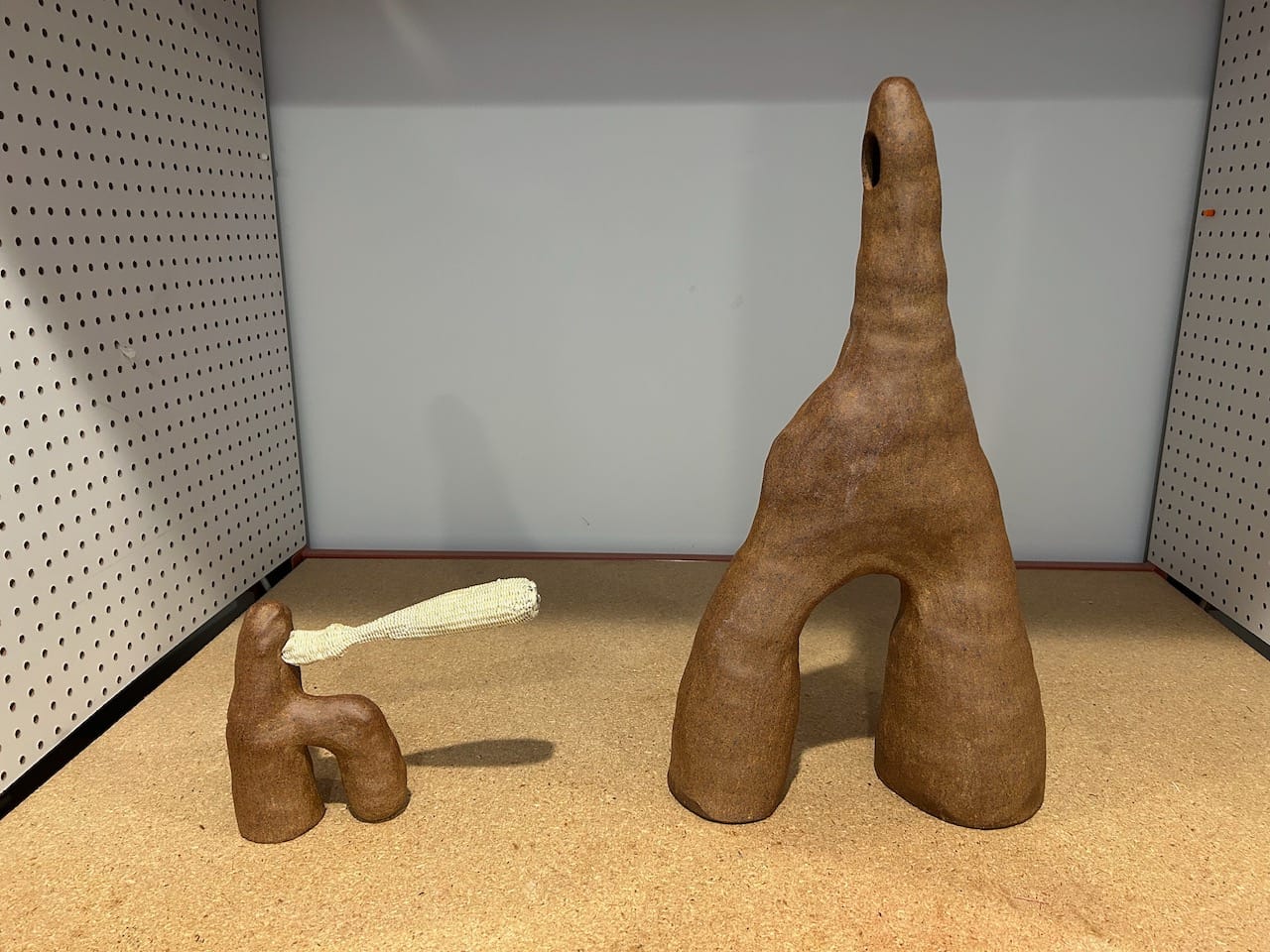
I got about five inches of the weaving done over two days, and then realized that... I hate it. I have never enjoyed knitting, or crochet, or really any other repetitive task. I know some people find these sorts of things soothing – the looping cycle, the same movement again and again. I, apparently, do not. Instead, I felt like I was doing nothing, seeing no progress, and feeling restless and annoyed. I thought that maybe if I got into a rhythm, and got good at the motions, this would change. But it didn't. I don't like it. And so I stopped.
I always struggle with moments like this. When is it worth trying to push through something that isn't fun? Sometimes that kind of pushing is necessary — to learn, to build a skill, or to just get to the outcome you want. But other times it's just a weird form of self punishment for no real reward. When is grit useful and fruitful, and when is it self destructive? I don't always know. Sometimes, in hindsight, I find that I'm happy that I persevered. Other times, I look at the final product and think "well that was foolish and painful."
These art projects are supposed to be fun. And I don't find being bad at things unpleasant really — I'm bad at a lot of the art I do. That's not the problem. In this case, I think I will never enjoy the process even if I get good at it. So what's the point in torturing myself?
What that means though, is that I now need to figure out what else to do with these ceramic pieces with holes in them originally meant for weaving?
awards
It's award season for journalism and that means that all those awards we applied for for Tested are being announced. And we've won some! I talked last newsletter about the Ambies, but we've also won a National Headliner Award, and were nominated for a Peabody (but didn't win).
Awards are strange things. They're amazing to be up for, and great to win, but I always feel a little bit uncomfortable talking about them. Every year I watch work that I think is amazing get passed up, and work I think is only mediocre win things. We all know that awards are not just about what is best, but also who is connected, who has the resources, who knows who. Awards are expensive to enter (each one costs hundreds of dollars) and time consuming to apply for (they each have their own application and often require essays or even letters of recommendation). I've been on both sides of this. I never won an award for Flash Forward. Now, Tested has won or been nominated for nine awards. I think Tested is really good, and deserves the recognition. But do I think it's nine times better than Flash Forward? Not really.
I know it's extremely annoying to complain about awards when you're winning them. And I'm not complaining here exactly. I'm just sharing how it feels to be both proud and a little wary of placing too much emphasis on awards.
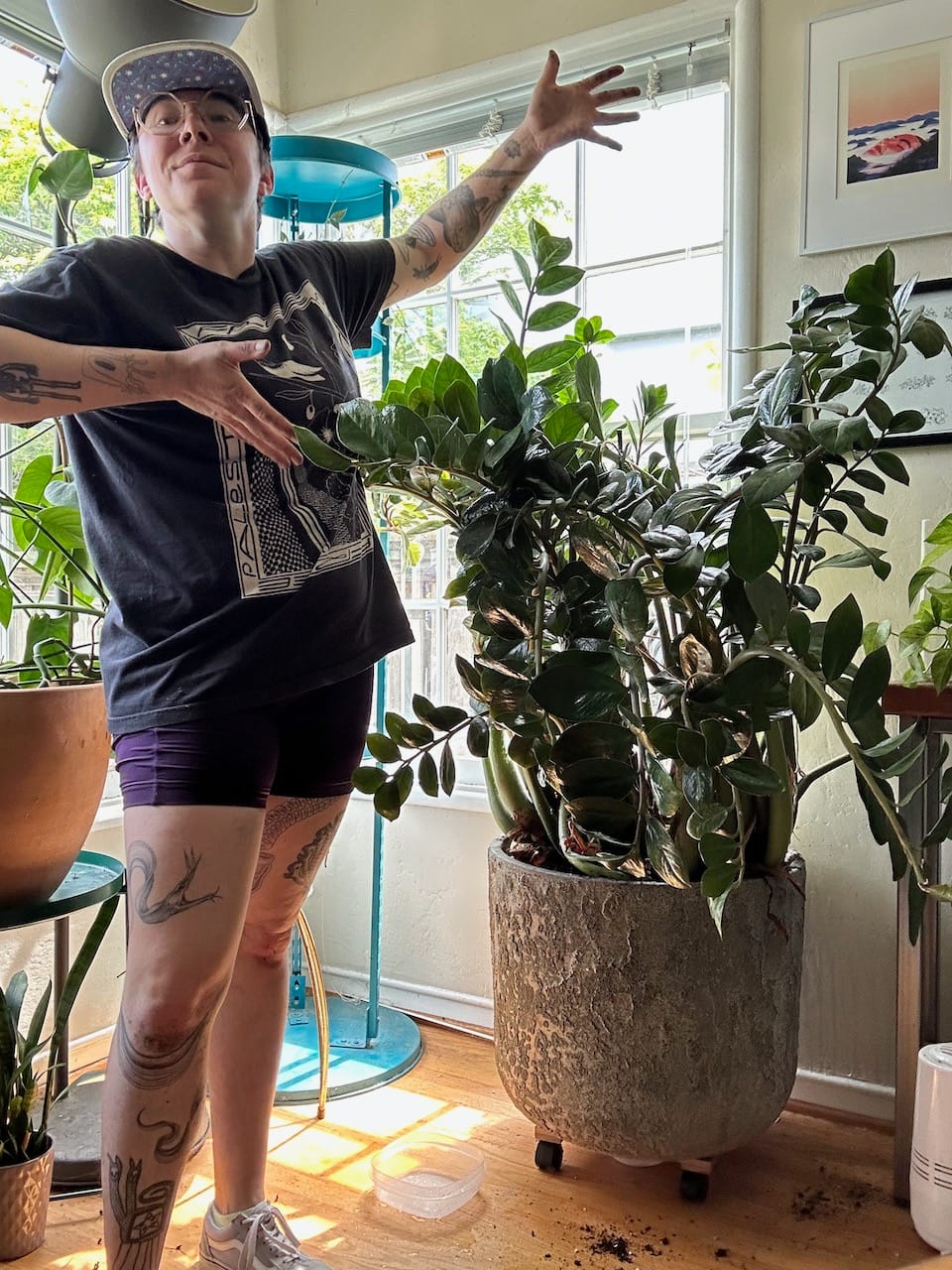

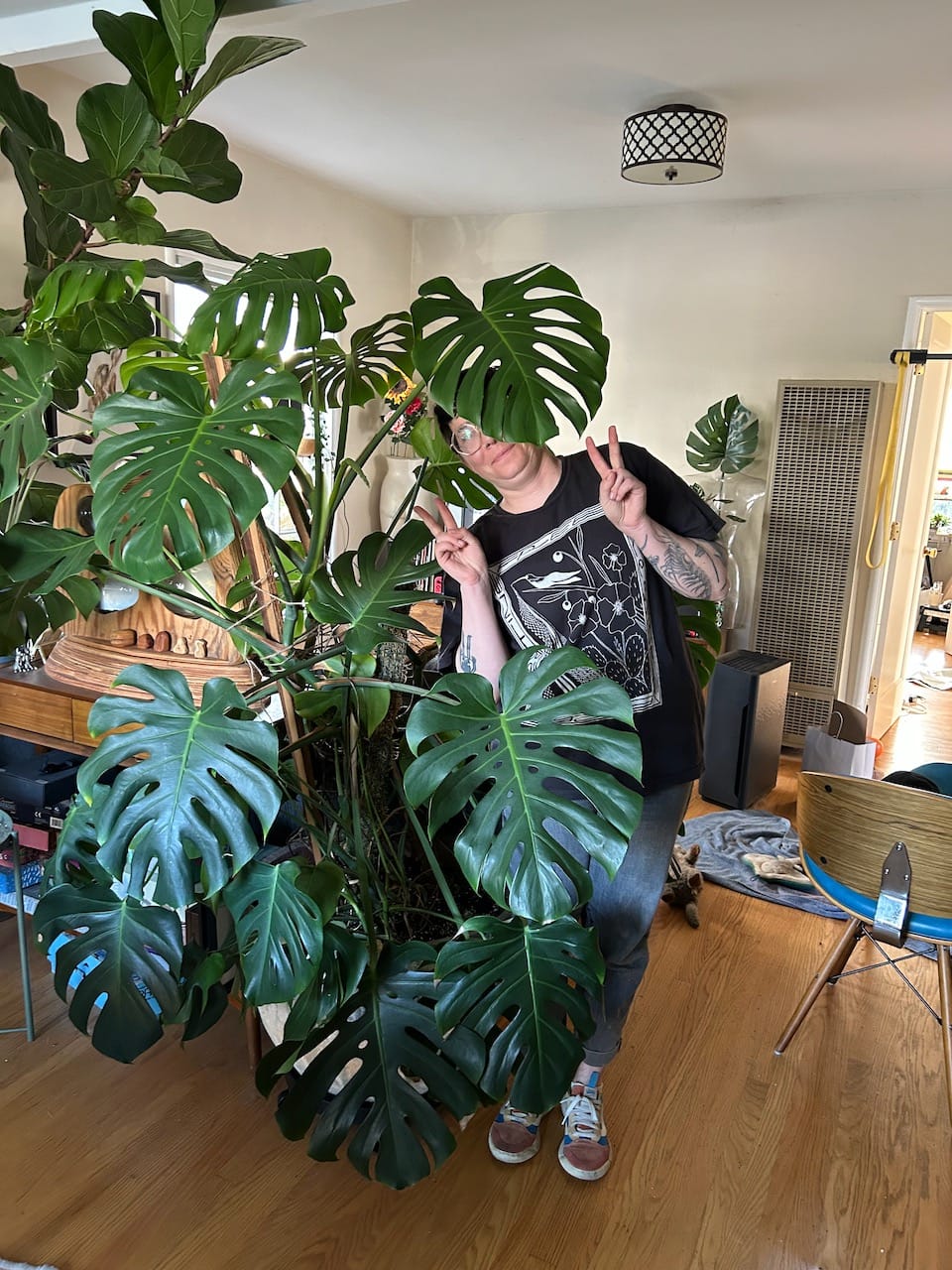
other things I did:
- Wrote last month's 〰️ in 〰️ out 〰️ newsletter.
- Did not manage to write a members only newsletter because I was on the road for more than half the month — sorry y'all! I'll make it up to you at some point.
- Repotted all my plants, including the big ones that are now both taller than I am!
- Finished a full (shitty) first draft of a novella (PROJECT TEONANACTL) and shared it with some friends and my agent for feedback.
- Did some reporting for a story for Defector that I'm excited about.
- Did some final pickups for the audiobook I recorded in March (I wrote about that in the last newsletter)
- Spoke with Filsan Abdiaman for her newsletter Project Love Run about Tested and how to have hard conversations about sex and gender when you're a little bit scared of fucking them up.
- Talked to Maggie Mertens for her newsletter My So-Called Feminist Life about Tested and the new rules that World Athletics has proposed.
- Wrote and rehearsed a talk about Tested for the (potential, future) Center for Gender and Sex in Health at the University of Illinois (paying supporters might get a version of that talk in their inboxes later this month).
